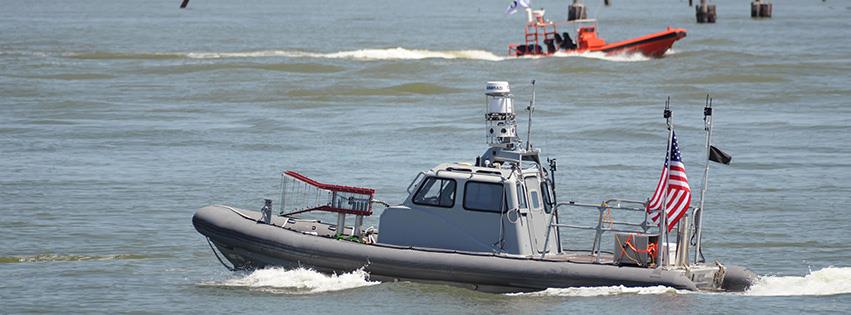US Navy's Boat Drones Can Swarm Enemy Attackers

While they're not quite sharks with laser beams attached to their heads, the U.S. Navy's new fleet of unmanned war boats could still cause quite a scare.
The waterborne drones can guard U.S. ships and autonomously swarm enemy vessels, according to the Office of Naval Research (ONR). The Navy successfully tested the system over a two-week period in August on the James River in Virginia.
"Our sailors and Marines can't fight tomorrow's battles using yesterday's technology," Rear Adm. Matthew Klunder, chief of naval research, said in a statement. "This kind of breakthrough is the result of the Navy's long-term support for innovative research in science and technology." [7 Technologies That Transformed Warfare]
The technology, known as CARACaS (Control Architecture for Robotic Agent Command and Sensing), is part of a portable kit that can be installed on most boats, allowing it to operate without a human controlling it. These so-called unmanned surface vehicles (USVs) can operate independently or as a group to surround an enemy ship or protect one of the Navy's own vessels.
However, any weapons fired from the unmanned boats would still require a human sailor's go-ahead, ONR officials said.
During the recent tests, a fleet of up to 13 Navy boats moved autonomously or under remote control to surround and shield a valuable Navy ship. When the boats detected a simulated enemy vessel, they quickly swarmed around it.
The seagoing drones could perform some of the dangerous work currently done by manned vessels, keeping sailors and marines out of harm's way, Navy officials said. In addition, unmanned boats are less expensive to operate than manned ones.
Get the world’s most fascinating discoveries delivered straight to your inbox.
The swarm demonstration took place just a few weeks before the anniversary of the terrorist attack on the Navy's USS Cole, which occurred off the coast of Yemen in October 2000. In that attack, a small boat detonated explosives near the USS Cole, a guided-missile destroyer, killing 17 sailors and injuring 39 others.
Autonomous swarm boats may have been able to fend off such an assault, Navy officials said. "If Cole had been supported by autonomous USVs, they could have stopped that attack long before it got close to our brave men and women on board," Klunder said.
Follow Tanya Lewis on Twitter and Google+. Follow us @livescience, Facebook & Google+. Original article on Live Science.



